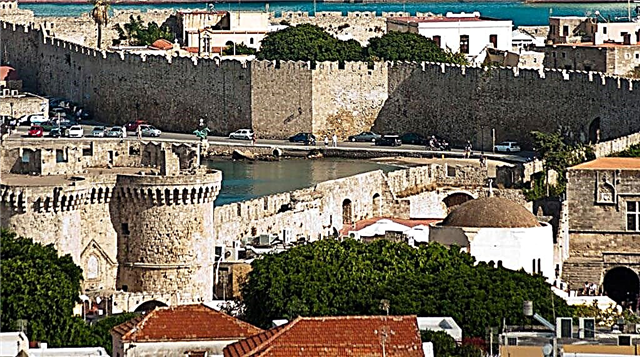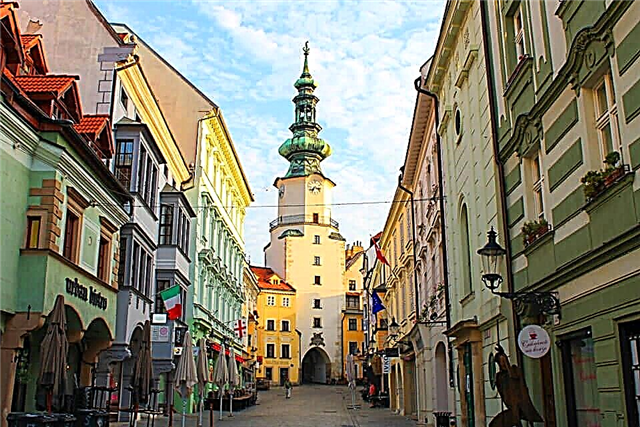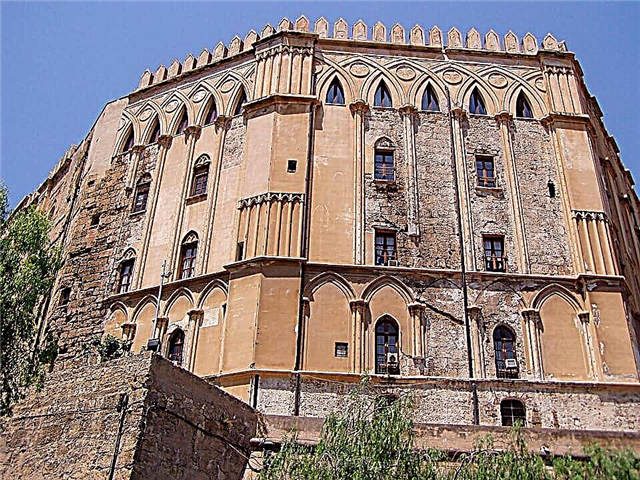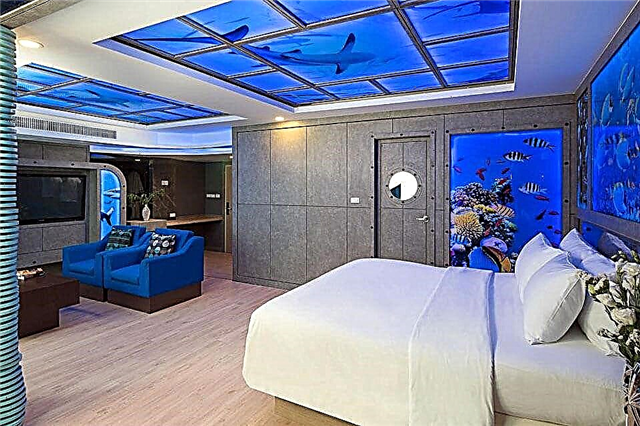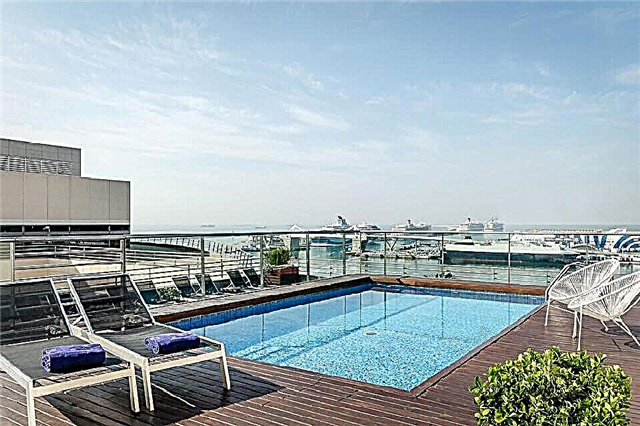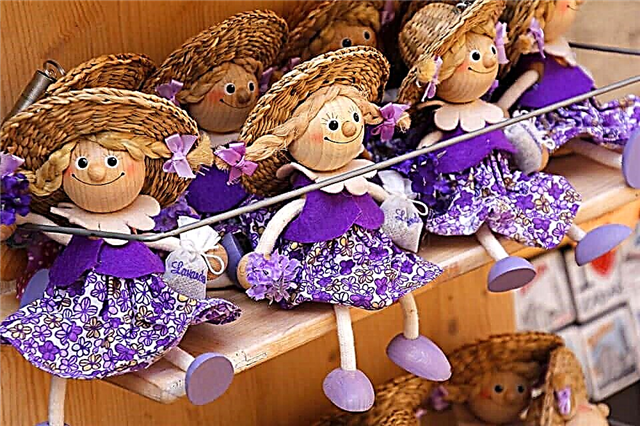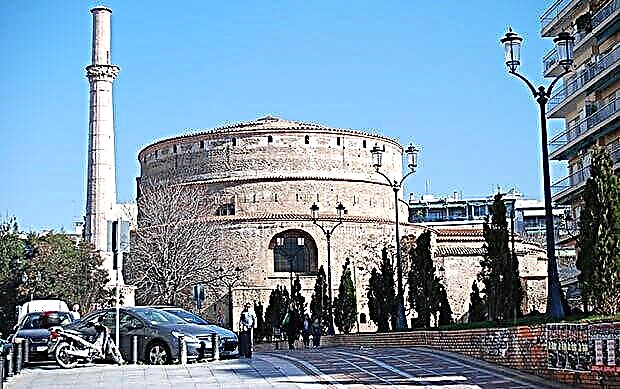Looking for an interesting vacation spot? Want to combine a beach holiday with memorable excursions? Then pay attention to the cradle of Greek culture, the city-museum of Thessaloniki. It is not for nothing that this particular settlement is recognized as the second most important and tourist attraction after Athens. And it is inferior to the capital only in terms of size and population. Today we will talk about the most striking sights of Thessaloniki, try to take a short walk through the historical and cultural places that still remember the discoveries of the brilliant Greeks, the bloody battles with the Roman legions and the destructive raids of the warriors of the Ottoman Empire.
White Tower
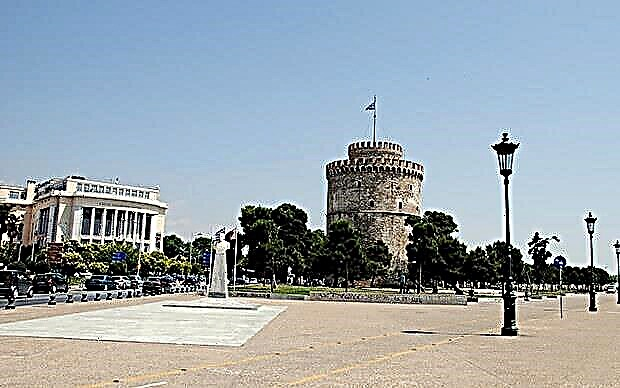
One of the most famous and striking sights of the Greek city is the White Tower. The building is located in the embankment area and has a second name - the Bloody Tower, to which it owes because of the execution of several hundred people. The Turks created the tower as part of the defensive wall for the city, later criminals were kept in its dungeons awaiting a court verdict.
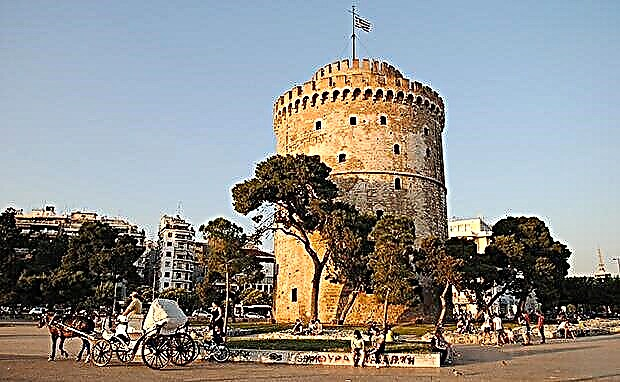
Today the tower is not only a striking landmark, but also has the status of a museum. Visitors are invited not only to look into its most secret corners, stroll along the corridors and stairs, but also enjoy the aromatic Greek cuisine served in a local cafe, under which the observation deck was given. As for the collection located here, almost all of the exhibits belong to the Byzantine era. At the moment, visiting the tower is absolutely free. To get to the attraction from anywhere in the city, just tell the taxi driver the address End Nikis Av, GR 54621. Visitors are welcome here every day from 8:30 to 15:00.
Aristotle square
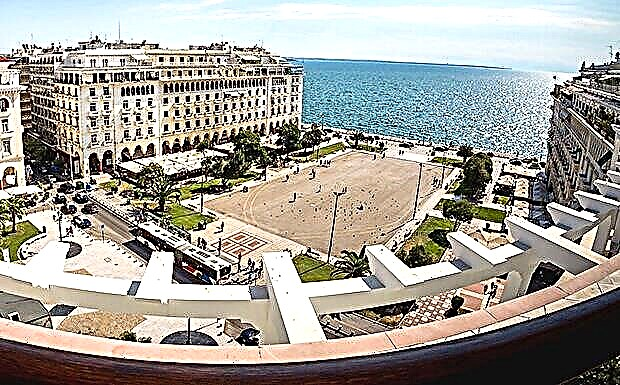
One of the most popular places not only for tourists, but also for meetings of local residents, is Aristotle Square. The sight was created according to the project of the architect E. Ebrar in 1917 in connection with the need to restore the city after a catastrophic fire. Today, there are numerous cafes and restaurants on the square, where guests of the city love to spend their time.
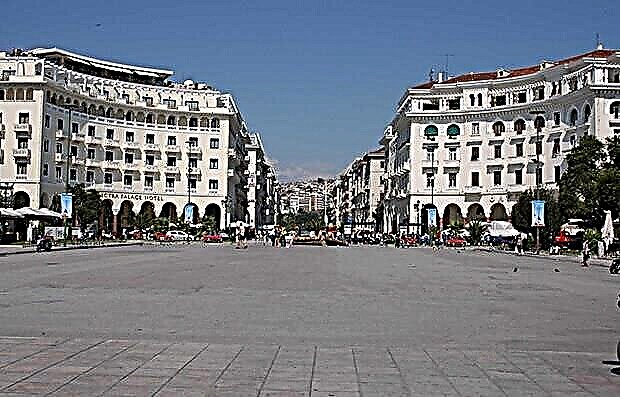
In addition, connoisseurs and connoisseurs of vibrant architecture will be able to enjoy the ingenious works of art from various historical periods and architectural trends. In particular, almost every square meter of the area is decorated with carved balconies, arches and other decorative elements. Of particular interest is a flowerbed, made in the form of a clock that shows real time. And, of course, the square is decorated with a huge statue of Aristotle. Numerous tourists are in a hurry not only to take pictures with the ancient philosopher, but also to hold onto his left toe. According to local belief, this simple action will definitely allow you to grow wiser. Not surprisingly, the finger is sharpened to shine ... The square is located at Platia Aristotelous 2-8 Thessaloniki. As you might have guessed, admission is free around the clock.
Basilica of Saint Demetrius
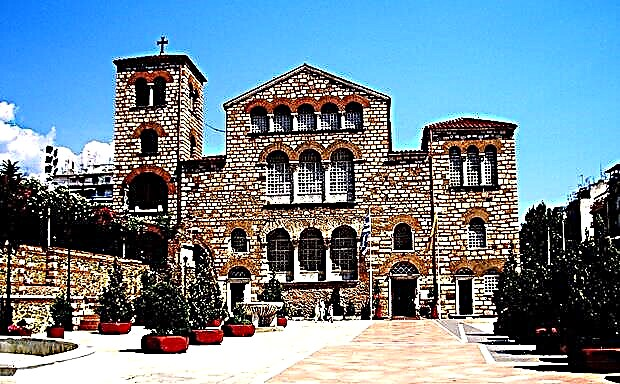
Moving on and the next attraction that we strongly recommend to include in your itinerary is the Cathedral in honor of St. Dmitry, who is the patron saint of Thessaloniki. According to history, Dmitry Thessaloniki was the ancient ruler of the city and in the first century he died a martyr's death, defending his Christian views. Four centuries later, a temple was erected in his honor, which still houses the remains of the patron saint. In addition, the belongings of another believing holy martyr - Anisia of Thessalonia - are also kept here.
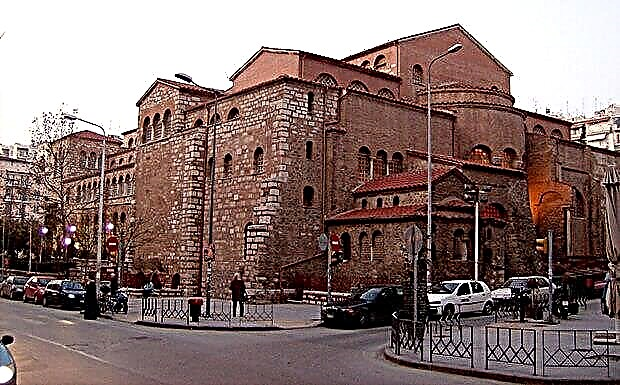
It is worth noting that tourists will not be able to see the temple in its original form, because in 1917 the basilica was almost completely destroyed by fire. Restoration work lasted from 1926 to 1948, as a result of which the craftsmen managed to completely restore the frescoes and inscriptions on the walls, and some of the supports and internal decorative elements remained practically unscathed and needed only a superficial restoration. Since then, the temple has been used again for its intended purpose, services are regularly held there, and at the end of the last century, the site was included in the UNESCO heritage list. For tourists and believers, the entrance to the temple is free. Visitors are expected at the address: Agiou Nikolaou 2-10 daily from 8 to 20 hours. You can take part in the service.
Arch and tomb of Galerius
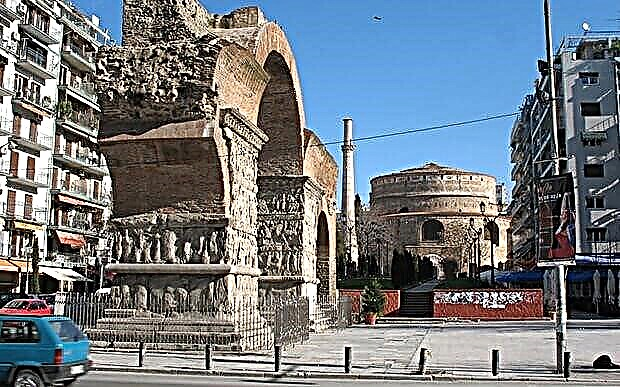
As you may have guessed, there are many attractions in Thessaloniki dedicated to historical and cultural figures, saints and military leaders, discoverers and philosophers. Another such object is the Triumphal Arch of the commander Galerius, which was erected in honor of one of the most striking victories over the army of the Sassadin kingdom. In addition to the arch itself, a tomb for the great commander was also erected, in which Galerius found his last refuge. Depending on who came to power in Thessaloniki, the purpose of the architectural complex and its individual structures changed. At first, part of the buildings was set aside for the church, and after the arrival of the Turkish conquerors in these lands, the church was turned into a Muslim mosque. Accordingly, for their needs, the Turks created annexes - an apse and a narthex from the southeastern and western parts, respectively, as well as a minaret, which is the only one that has survived to our time.
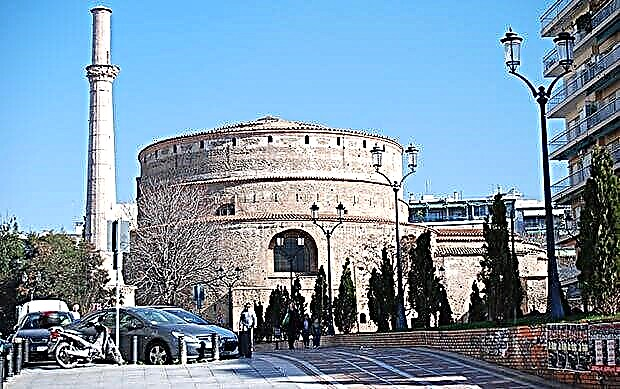
The partially destroyed arch is decorated with carved rock frescoes, which tell in detail about the victorious campaign of the ruler Galerius, the sacrifice, the acceptance of gifts, the manifestation of mercy by the great ruler, etc. The monument looks impressive and will take its rightful place in the collection of visited places of any tourist. Visiting the attraction is absolutely free from 9 am to 7 pm.
Monument to Alexander the Great
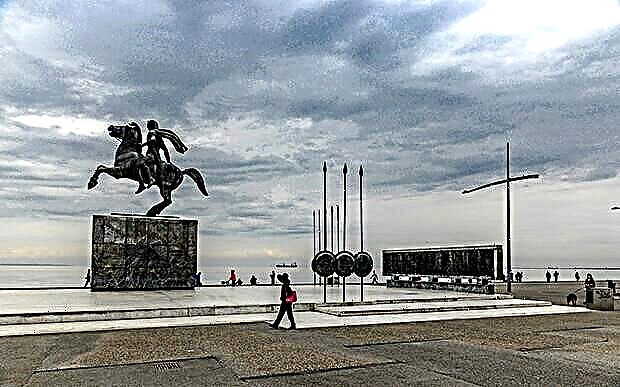
Another attraction of Thessaloniki, which is located on the embankment of the city, is dedicated to the famous Greek - Alexander the Great. You can find the monument near the White Tower. It is worth noting that local residents have a special, reverent attitude towards this historical figure. Indeed, it was during the reign of A. Macedonian, his campaigns of conquest and brilliant victories that Thessaloniki found itself at its peak.
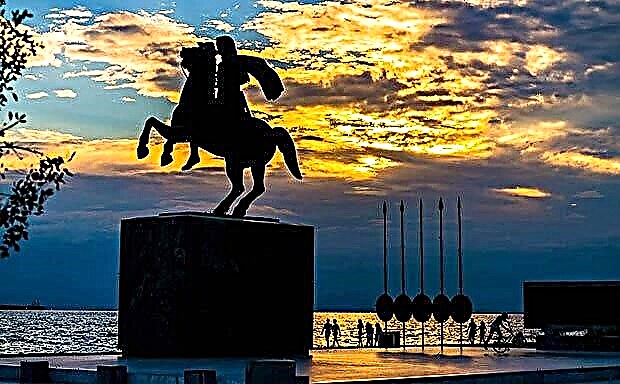
The monument is a six-meter composition in the form of a commander sitting on his famous horse Bucephalus. Behind his back, you can observe several shields and mines with various images, each of which carries a certain semantic load. So, the image of a snake means wisdom, Medusa is the personification of deceit, the lion is courage, and the falcon, respectively, is the gift of foresight. The Greeks are convinced that this one of the most prominent historical figures possessed all these advantages and gifts.
It is not difficult to find a monument, access to it is free around the clock.
Archeology museum
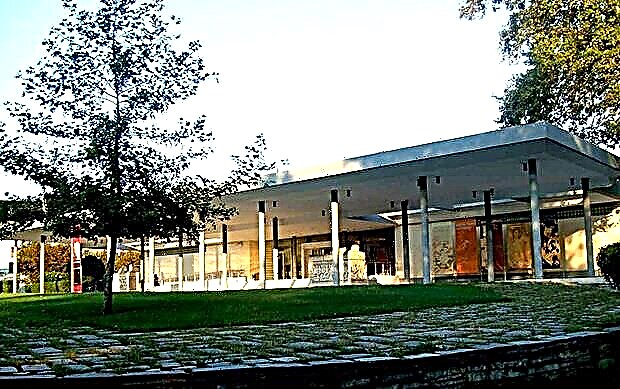
But every tourist should visit the local museum of archaeological and historical finds from different historical periods. The first finds from different parts of Macedonia began to flock to the museum halls back in 1977. Soon the exposition was so voluminous that an urgent expansion was required.
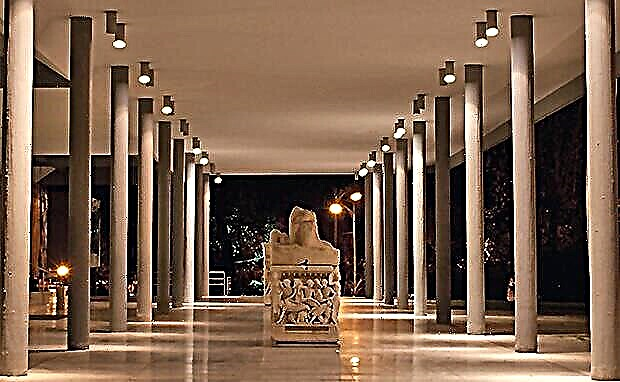
Museum guests will be able to get acquainted with the rich history of Thessaloniki, as well as other regions of Macedonia, see historical artifacts that are of great value and importance for archeology. Finds that date from the period of Roman rule are highlighted in a separate collection.Also, in separate rooms, visitors can see the most significant and unusual finds from the archaic Sindos cemetery, artifacts of royal burials, burial attributes and other results of archaeological excavations and research. There are 11 thematic halls in total. Among the most famous artifacts: a statue of Harpocrates, dated to the second century BC, a larnax made of pure gold (it is assumed that it was intended to store the ashes of King Philip II), gold masks and bronze helmets, medals, shields, tiaras and other jewelry.
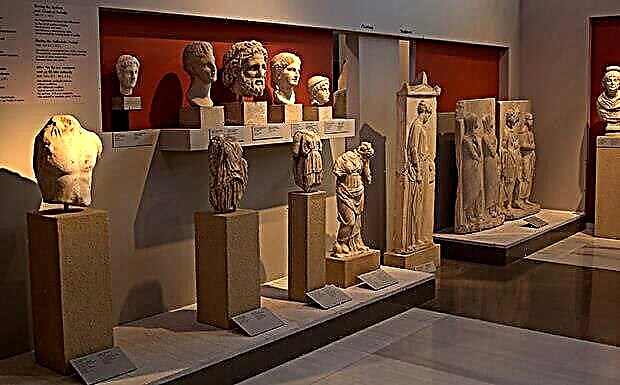
Tourists are welcome here every day from 8 am to 10 pm, Monday is a day off. Also, the museum is closed on public holidays. We advise you to check the timetable on the official website, since the summer and winter timetables are different. The ticket price is 2-4 euros, depending on the category of the visitor.
War museum
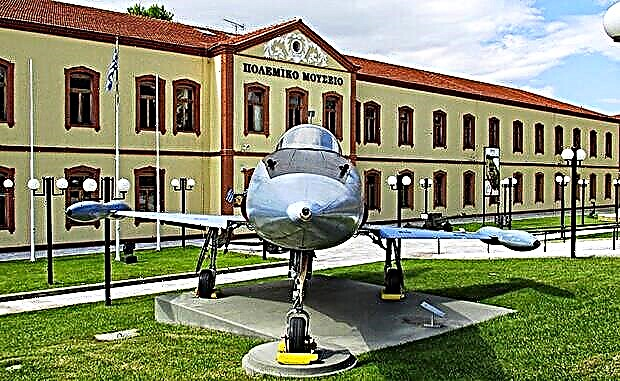
There is another interesting museum in Thessaloniki, which contains many objects of the military history of Macedonia. It first opened its doors to the general public in 2000, although the construction of the building dates back to the early 20th century. The exposition of the museum covers various aspects of the military history of Thessaloniki and Greece in general. The halls display an impressive collection of models of warships, clothing samples of different types of troops, distinctive paraphernalia and even some exhibits of weapons from neighboring countries. In separate expositions, objects of the times of the First and Second World Wars, individual military operations, and also dedicated to the periods of the Turkish, German and Bulgarian occupations of Greece are highlighted. It also houses an impressive library of historical and military publications. Well, next to the building, right under the open sky, there is a collection of combat aircraft and armored vehicles.
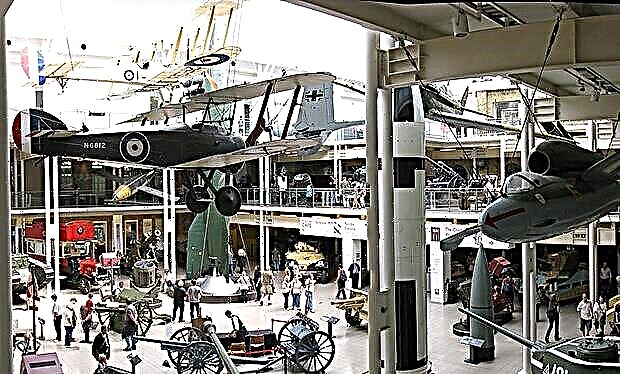
The museum is open from Tuesday to Friday from 9 to 14 hours, on Saturday and Sunday from 10 to 14 hours. Monday is a day off. The entrance ticket costs 6 euros, there is a discount for children and some other categories of visitors.
Museum of the Macedonian Struggle
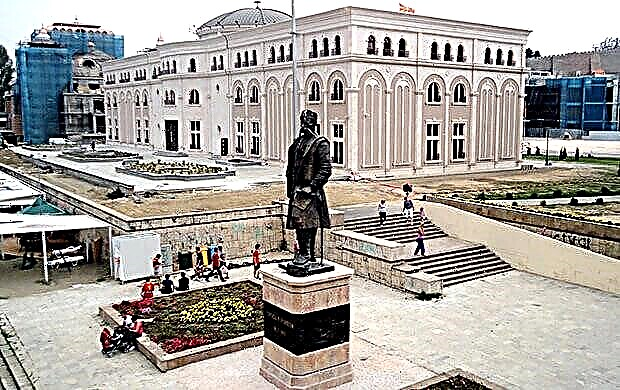
Another museum has such an original name. The exposition has been operating since 1981 and includes a whole collection of objects that tell both the ancient and recent history of the struggle of the Greeks for their independence. In addition to samples of weapons, armor, clothing and other personal belongings of the Greeks, the museum displays rare and unique documents dating from the period from 1770 to 1912. Here you can find rare books, and things of famous Greeks, and family jewelry. The collection includes other exhibits no less interesting for acquaintance: national wrestling costumes of the Greeks, photographs and even newspapers.

By the way, only a few artifacts are kept in the halls of the museum every day, and most of the collection is exhibited only occasionally. Today, the museum receives visitors from Tuesday to Friday from 9 to 14 hours, Monday is defined as a day off. On Saturdays, you can also visit the showrooms, which open one hour later than usual. You can get to the building by buses: 39, 3, 5, 6, 12, 33 or by taxi, giving the address Prox. Koromila str / 23, 54622.
Panagia Chalkeon
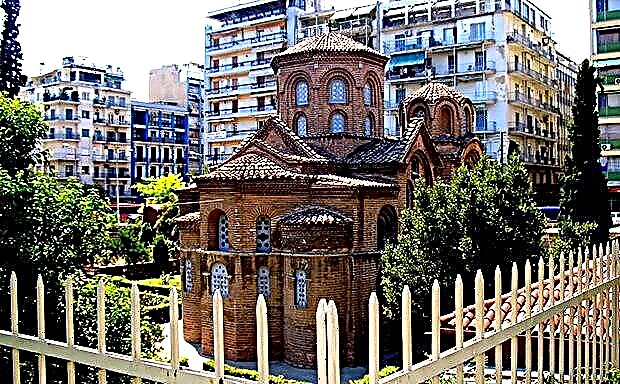
We strongly recommend that you include in your excursion program another striking attraction of Thessaloniki - the cross church of Panagia Chalkeon. The temple, for its historical and cultural value, was included in the list of World Heritage Sites in 1988 and today is very popular among tourists. According to the inscription on the doors of the temple, its creator was Christopher, who created it for the salvation of his soul and the souls of his loved ones for numerous sins. The creator himself was buried at the northern wall of the building. After the conquest of Greece by the Turks, the church was also turned into a mosque, which owes its unusual name.
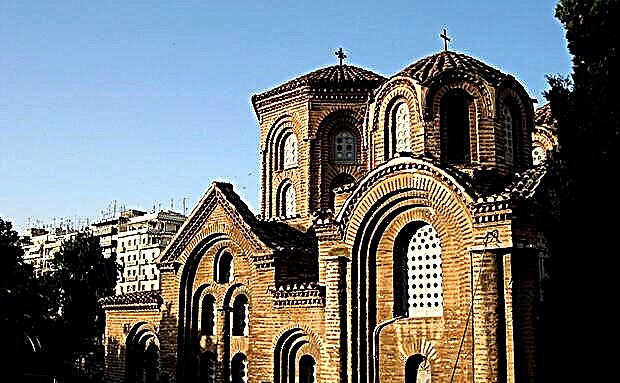
Despite its Christian purpose, the temple has elements that are unconventional for such buildings, including an altar. The frescoes have not survived very well to this day, but they are still quite recognizable. The most famous of them glorify Christ and his apostles.
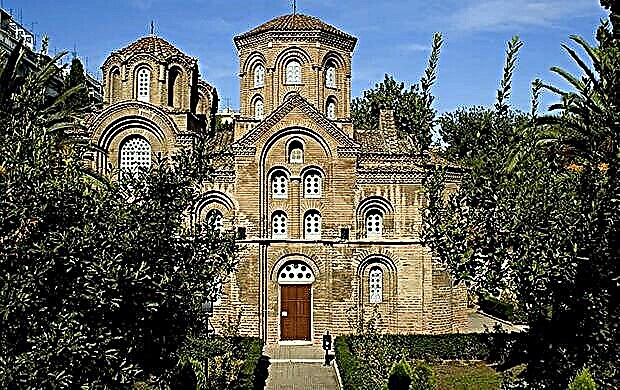
The attraction is located at: Chalkeon 2, Thessaloniki 546 24. Visitors are welcome daily from 7 am to midnight. The entrance ticket will cost tourists only 4 euros.
As you can see, tourists who decide to visit the Greek Thessaloniki will have something to do. In addition to excellent conditions for a beach holiday, a lot of entertainment and cultural and entertainment facilities, guests of the resort will have a very rich and interesting excursion program.

